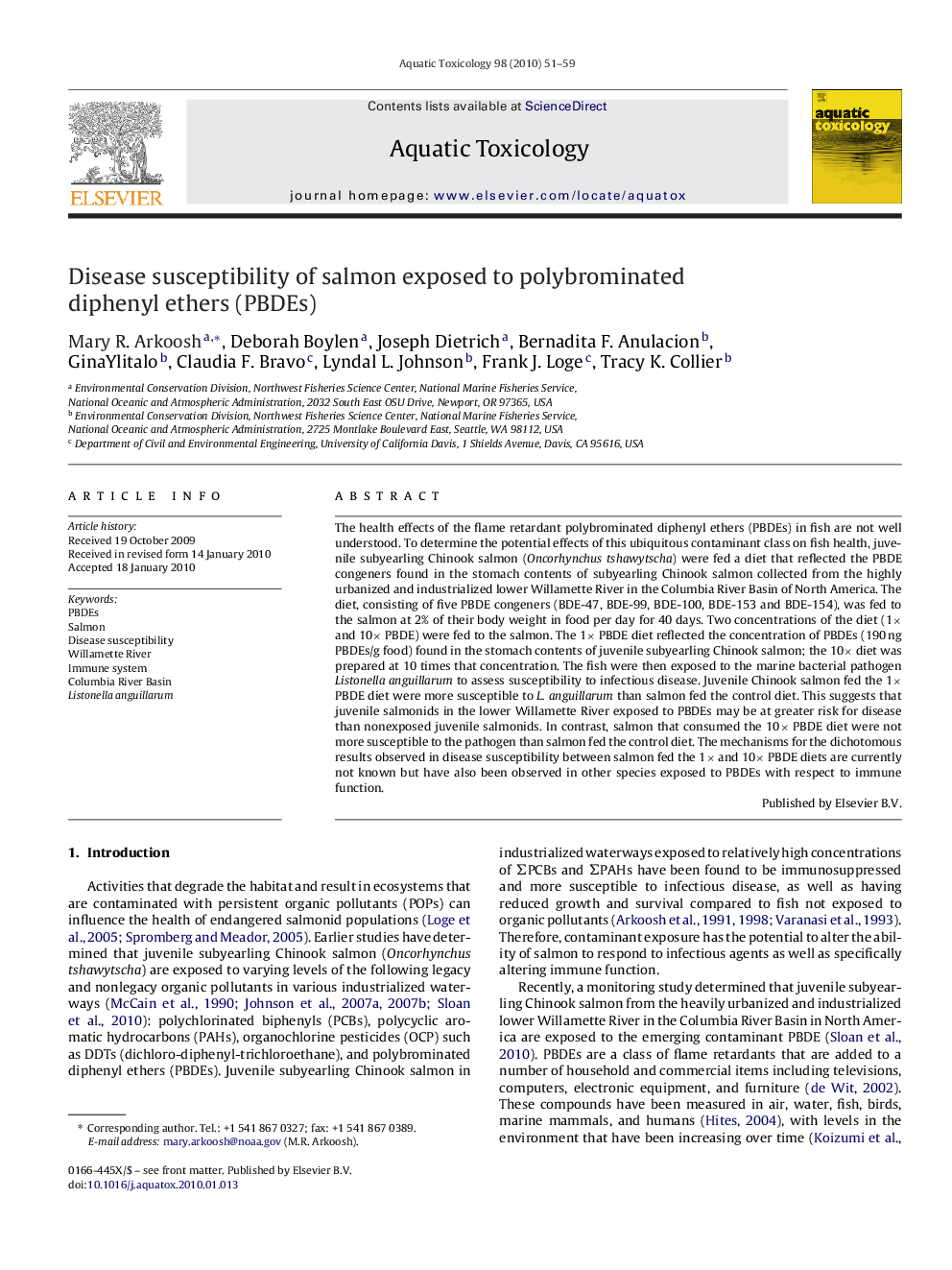| Article ID | Journal | Published Year | Pages | File Type |
|---|---|---|---|---|
| 4530446 | Aquatic Toxicology | 2010 | 9 Pages |
The health effects of the flame retardant polybrominated diphenyl ethers (PBDEs) in fish are not well understood. To determine the potential effects of this ubiquitous contaminant class on fish health, juvenile subyearling Chinook salmon (Oncorhynchus tshawytscha) were fed a diet that reflected the PBDE congeners found in the stomach contents of subyearling Chinook salmon collected from the highly urbanized and industrialized lower Willamette River in the Columbia River Basin of North America. The diet, consisting of five PBDE congeners (BDE-47, BDE-99, BDE-100, BDE-153 and BDE-154), was fed to the salmon at 2% of their body weight in food per day for 40 days. Two concentrations of the diet (1× and 10× PBDE) were fed to the salmon. The 1× PBDE diet reflected the concentration of PBDEs (190 ng PBDEs/g food) found in the stomach contents of juvenile subyearling Chinook salmon; the 10× diet was prepared at 10 times that concentration. The fish were then exposed to the marine bacterial pathogen Listonella anguillarum to assess susceptibility to infectious disease. Juvenile Chinook salmon fed the 1× PBDE diet were more susceptible to L. anguillarum than salmon fed the control diet. This suggests that juvenile salmonids in the lower Willamette River exposed to PBDEs may be at greater risk for disease than nonexposed juvenile salmonids. In contrast, salmon that consumed the 10× PBDE diet were not more susceptible to the pathogen than salmon fed the control diet. The mechanisms for the dichotomous results observed in disease susceptibility between salmon fed the 1× and 10× PBDE diets are currently not known but have also been observed in other species exposed to PBDEs with respect to immune function.
